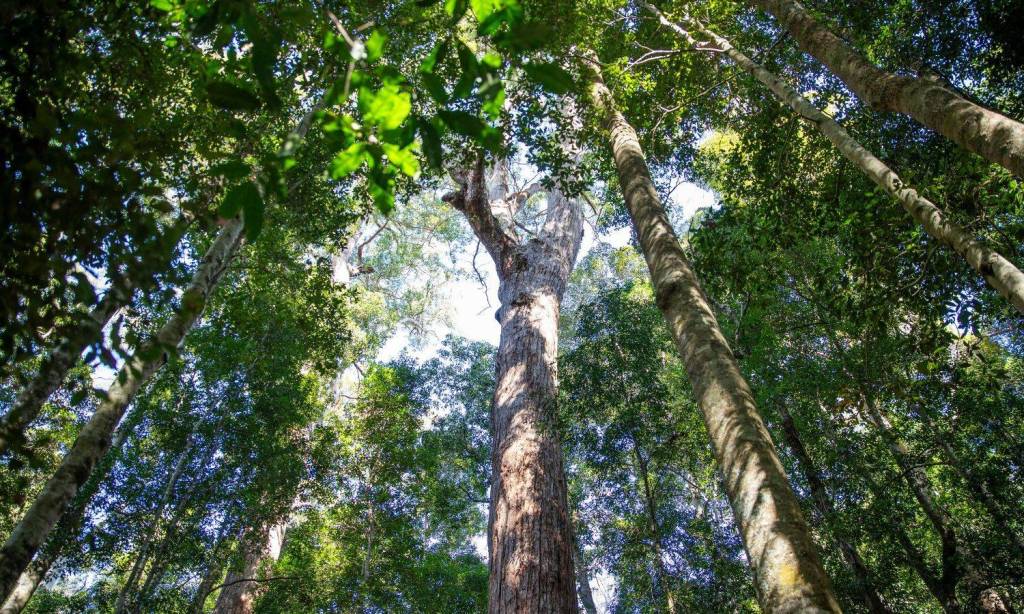“Beautiful environment and community spirit.” That’s what a review of NSW coastal town, Bellingen, on website Homely reads. And after a recent trip to visit the town, which lies a 30-minute drive south of Coffs Harbour on the NSW Mid-Coast, I completely agree.
I spent three days in Bellingen — or ‘Bello’, as it’s called by locals — as a guest of HP Australia and World Wildlife Fund (WWF) Australia, visiting sites that showed that beautiful environment and community spirit.
Sadly, though, I saw that same environment suffering deforestation, too. However, I also witnessed the Bello local community, local government, Indigenous groups, as well as HP Australia and WWF Australia, working hard to protect it.
Several trucks loaded with freshly-cut towering trees drove by us, and I saw a part of the forest that had recently been logged. It looked like a fire had torn through it — it was barren and lifeless, fully exposed to the sun.
Australia is home to 132 million hectares of forest, the equivalent size of the Northern Territory, and 17% of our land. But the deforestation problem isn’t only in Bello — 1 tree is bulldozed in Australia every second. Australia is among 24 of the worst deforestation fronts in the world — the only developed nation on the list.
The trip I went on was to showcase the work HP and WWF are doing to protect, manage and restore more than 21,500 hectares across forests of eastern Australia in NSW and Queensland. To put that in perspective, that’s an area three times the size of Sydney Harbour. That also includes 1,500 hectares of degraded koala habitat — much of that in Bellingen.
“There’s a common misconception in Australia that we can bulldoze trees if we replant them,” says Dr Stuart Blanch, Conservationist at WWF Australia. “Restoring the forests we have lost is important, but it’s imperative to stop deforestation in the first place and to protect the forests that remain,”
This is because a newly planted tree sapling doesn’t have the same superpowers as a mature tree, Dr Blanch says. Superpowers that are needed to house lots of wildlife, including the Greater Glider which relies on tree hollows, which can take up to 250 years to form, for their homes. Older, more mature trees store more carbon from the atmosphere than young trees.
“So, planting new trees alone isn’t the solution,” says Dr Blanch. “From our consumer research, we’ve seen that many Australians aren’t aware of the causes of deforestation in Australia. Many people believe the driver of deforestation is from housing and development, but actually, the majority of deforestation occurs in Australia through clearing land for agriculture for cows and sheep.”
Instead of using bulldozed trees for housing and development, though, we can look to use sustainable alternatives, like bamboo, green steel, green aluminium, industrial hemp, engineered wood, mass wood, industrial hemp and cross-laminated timber.
“We also need to expand regulated plantations, which can provide us with dedicated sources of timber for the future — like pine to build houses,” says Dr Blanch. “For Australia to meet its goal of halting and reversing deforestation by 2023, we need to take bold action now to save our future.”
So, what can you do, you’re probably wondering? Well, Dr Blanch suggests a few things. For starters, you can sign WWF’s petition here that tells the government you’re in support of ending deforestation and logging. You can also start choosing FSC-certified paper products that are recycled or come from responsibly managed forests.
You can educate your family, friends and community on some lessons you’ve learnt in this article and online at WWF on why it’s important to protect and restore trees. You might also want to support local organisations working to plant new trees, either financially or with your physical help.
And finally, you can adopt a tree with WWF here (a tax-deductible donation!). Doing so helps to provide our forests and provide a safer future for the unique creatures that call them home.
Related: Plug and Stay: 7 NSW Lodges, Hotels and Other Stays With Free EV Charging
Related: 7 Winery Accommodation Spots in NSW For When You’re Done Sipping and Swirling
Read more stories from The Latch and subscribe to our email newsletter.

